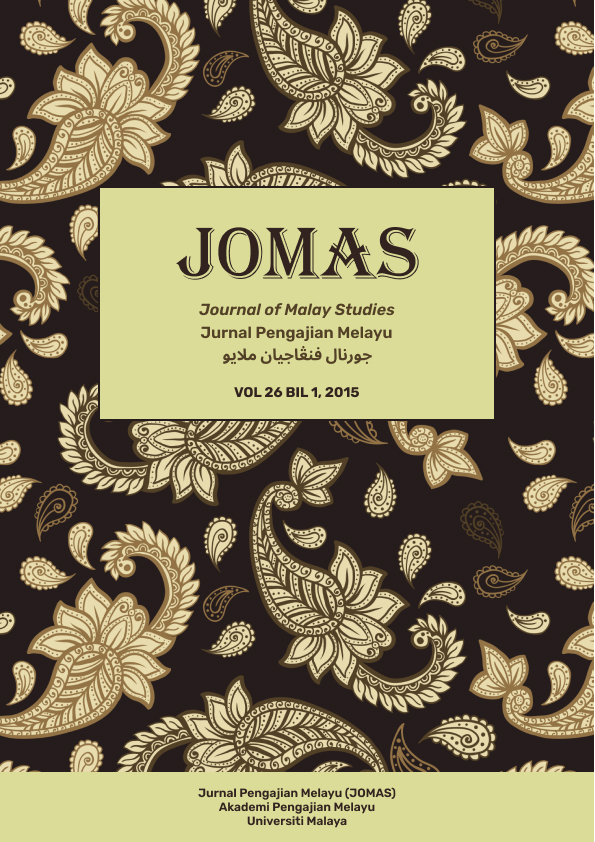ANALISIS KESOPANAN BAHASA LEECH (1983) & GRICE (1975): MANIFESTASI POLA & STRUKTUR KESOPANAN BAHASA DALAM NOVEL MELUNAS RINDU ANALYSIS OF LEECH (1983) AND GRICE’S (1975) POLITENESS: THE PATTERN AND STRUCTURAL OF POLITENESS LANGUAGE MANIFESTATION IN THE NOVEL MELUNAS RINDU
Main Article Content
Abstract
Kajian ini bertujuan untuk mengklasifikasi dan menstrukturkan pola kesopanan bahasa dalam novel Melunas Rindu, iaitu Komponen Sastera (Komsas) yang digunakan oleh murid tingkatan empat di Zon 4 (Johor, Sabah, Sarawak dan Wilayah Persekutuan Labuan). Gambaran kesopanan bahasa diperlihatkan melalui peristiwa dan dialog-dialog antara watak dalam novel ini. Dalam mempraktikkan kesopanan berbahasa, terdapat struktur tertentu yang digunakan sesuai dengan peristiwa yang dirujuk. Sehubungan dengan itu, analisis yang dilakukan akan memaparkan struktur peristiwa kesopanan bahasa yang diaplikasikan dalam data kajian. Novel ini dianalisis berdasarkan dialog watak utama dan watak sampingannya dengan berfokus pada dialog dalam bab 12 novel ini. Dialog yang menjadi data kajian akan dianalisis dengan menggunakan model kesopanan Leech (1983) dan model kesopanan Grice (1975). Kajian ini menggunakan kaedah kepustakaan, kaedah analisis teks dan kaedah kuantitatif. Berdasarkan analisis, dapatan kajian memperlihatkan hanya empat maksim Leech dan dua maksim Grice telah dipatuhi. Selain itu, dapatan kajian juga menunjukkan bahawa maksim-maksim Leech tidak dapat berdiri sendiri bagi menggambarkan kesopanan berbahasa dalam beberapa peristiwa sebaliknya memerlukan kombinasi maksim sehingga membentuk pola-pola tertentu. Kehadiran maksim Grice dalam kasus tertentu telah bahawa struktur yang digunakan dalam pola kesopanan bahasa bagi setiap peristiwa adalah bervariasi. Sehubungan itu, dapat disimpulkan bahawa kesopanan bahasa dan struktur pola kesopanan yang wujud tidak berlaku sewenang-wenangnya sebaliknya berobjektifkan sesuatu peristiwa.
Kata kunci: dialog, prinsip kesopanan, prinsip kerjasama, struktur, pola kombinasi dan pola kombinasi maksim.
The purpose of this research was to classify and structuralize the politeness pattern in the novel entitled Melunas Rindu, which is a literature component (Komsas) that was used by the form four students in Zone 4 (Johor, Sabah, Sarawak and Wilayah Persekutuan Labuan). The politeness pattern was depicted through various contexts and dialogues between the characters in the novel. When practising the politeness, a suitable structure was used according to a specific context. Thus, the research data would reflect the analysis done on this politeness degree pattern. The dialogues of the main and supporting novel characters from Chapter 12 were analysed. Two models, Leech Politeness Principle (1983) and Grice Model of Communication (1975), were used to analyse the dialogues. This research used the library research, text analysis and quantitative methods. The findings showed that only four Leech maxims and only two Grice maxims were fulfilled. The findings also showed that the Leech maxims were not able to stand alone in portraying the politeness degree, for they need a combination of maxims to form specific patterns. In certain cases, the Leech maxims were completed with the presence of the Grice maxims. In addition, the application of structure in the politeness pattern for each contexts was diversified. It can be concluded that the politeness and its structure of politeness pattern exist because of specified events.
Keywords: dialogues, the politeness principles, the cooperative principles, structures, combination pattern, maxim combination pattern.

